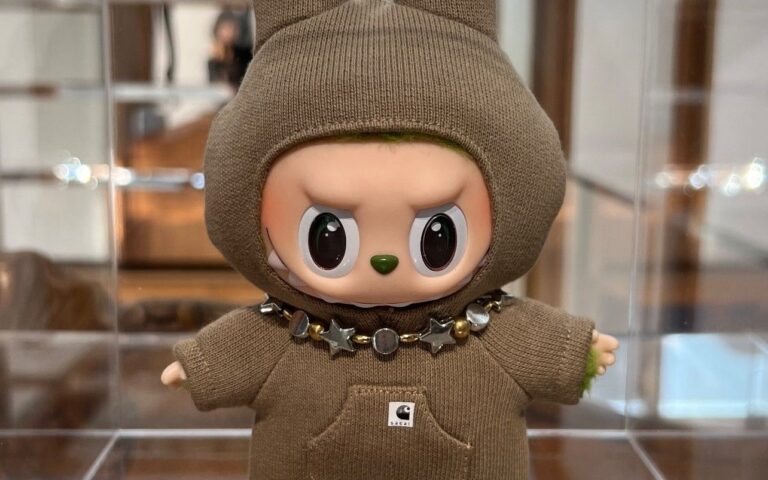On the weekend of June 8th, Milan’s Rinascente department store became the stage for an unusual scene: a seemingly endless line of people queuing to buy a Labubu at the Pop Mart pop-up. The toy—a furry little monster the size of a wallet, created by Hong Kong artist Kasing Lung—represents the new frontier of hype culture, a desirable object to hang from your bag that has reached the height of its popularity this year, thanks to the resurgence of cute and colorful accessories. Limited editions and online resales have inflated the price of this giant keychain, leading Pop Mart to a +165% revenue increase in the first quarter of 2025. While the toy brand was sealing its much-anticipated partnership with Milan’s most iconic department store, Japanese label Sacai announced it will auction off a limited edition series of thirteen Labubu on Pharrell Williams’ platform, Joopiter, on June 18th. Further boosting the media impact of the collaboration is the K-pop band Seventeen, for whom Sacai created a custom capsule collection launching on the same day on Joopiter’s website. All net proceeds will be donated to UNESCO, of which both Seventeen and Williams are ambassadors.
And just like that, Labubu entered the world of fashion—first with a pop-up at Rinascente, then with a Sacai-designed outfit. The success of these plush toys is a sign of the times we’re living in, as well as a confirmation of the challenges faced by the fashion and beauty industries. If a few years ago brands could rely on affordable luxuries like lipsticks to stay afloat in times of crisis—the term lipstick index was coined by Leonard Lauder in 2008—today even lip tints can’t lift consumers’ spirits. The new stars of the moment are toys—more precisely, the kind you can show off: Sonny Angels, Hello Kitty, Labubu, and the Birkinification. While Chinese toy manufacturer Pop Mart is now worth $34 billion (more than Sanrio, Hasbro, and Mattel combined), the beauty sector is showing signs of fatigue: in the first quarter of the year, Coty reported a 6% revenue drop, LVMH’s perfumes and cosmetics division—including Sephora—remained flat, and L’Oréal’s growth was a modest 3.5%, far below its previously stellar numbers. On closer look, one could even congratulate Hailey Bieber for selling Rhode for $1 billion just in time.
Could it be that the new luxury market is toys? That consumers now prefer to invest in plush outfits instead of their own wardrobes? It seems we’ve entered the era of the Labubu Index. With alarming news from all corners of the globe, the fear of being deceived (or replaced) by artificial intelligence, and the stress caused by economic uncertainty, nostalgia appears to be the most effective remedy to soothe our fears. After all, the simultaneous release of Barbie and Oppenheimer in 2023 was an early sign of the great aesthetic paradox that fashion would soon succumb to: basic outfits, quiet luxury, and logo-free wardrobes versus the wild explosion of colorful trinkets, plush toys, and displayable knick-knacks. In other news, Uniqlo is about to launch a collaboration with Sylvanian Families: so if buying toys you’ll never use makes you feel guilty, buying a T-shirt with their image might just help you justify the expense.


